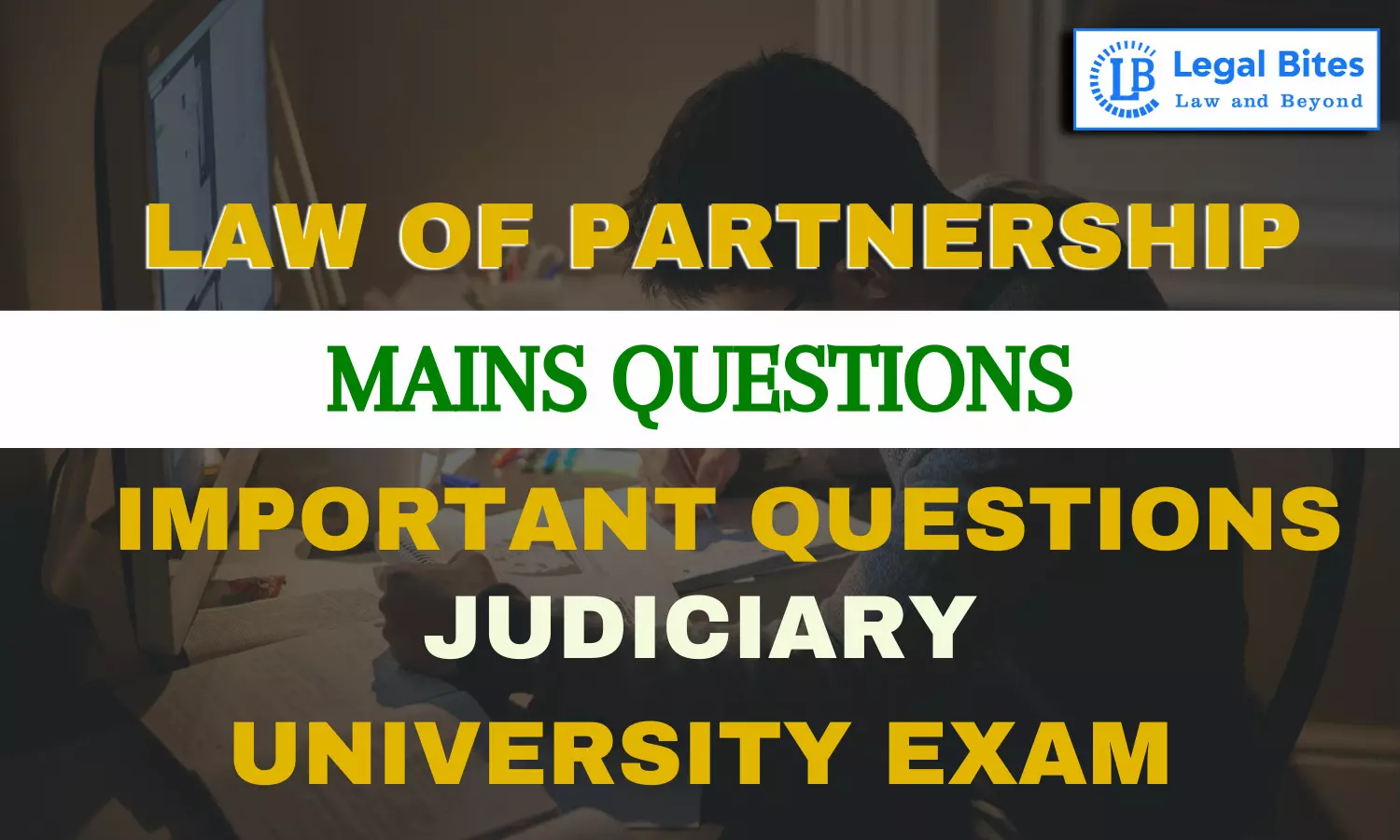Comment on the statement that dissolution involves a change in the relation of partners but does not end partnership.
Find the answer to the mains question of the Law of Partnership only on Legal Bites.

Question: Comment on the statement that dissolution involves a change in the relation of partners but does not end partnership. [HJS 1988]Find the answer to the mains question of the Law of Partnership only on Legal Bites. [Comment on the statement that dissolution involves a change in the relation of partners but does not end partnership.]AnswerThe statement that dissolution involves a change in the relation of partners but does not end the partnership is incorrect. Dissolution is the...
Question: Comment on the statement that dissolution involves a change in the relation of partners but does not end partnership. [HJS 1988]
Find the answer to the mains question of the Law of Partnership only on Legal Bites. [Comment on the statement that dissolution involves a change in the relation of partners but does not end partnership.]
Answer
The statement that dissolution involves a change in the relation of partners but does not end the partnership is incorrect. Dissolution is the legal process that brings an end to a partnership. It signifies the termination of the partnership and the winding up of its affairs.
According to the Indian Partnership Act, 1932, Section 39 defines dissolution of a partnership as the process by which the partnership relationship between partners is terminated. Upon dissolution, the rights and obligations of the partners, as defined under the partnership agreement or the relevant laws, come to an end.
The dissolution of a partnership firm merely involves a change in the relation of partners; whereas the dissolution of the firm amounts to a complete closure of the business. When any of the partners dies, retires or becomes insolvent but if the remaining partners still agree to continue the business of the partnership firm, then it is the dissolution of the partnership not the dissolution of the firm. Dissolution of partnership changes the mutual relations of the partners. But in case of dissolution of firm, all the relations and the business of the firm come to an end. On dissolution of the firm, the business of the firm ceases to exist since its affairs are wound up by selling the assets and by paying the liabilities and discharging the claims of the partners. The dissolution of a partnership among all partners of a firm is called dissolution of the firm.
Dissolution of a Partnership firm may be effected in the following ways:
- Dissolution without the intervention of the Court.
- Dissolution by Court.
Dissolution can occur in several ways, including by mutual agreement, expiration of the partnership term, completion of the specific undertaking, death of a partner, the bankruptcy of a partner, or by court order due to misconduct or inability to carry on the business. Once a partnership is dissolved, the partnership no longer exists as a legal entity.
Following dissolution, the partners enter the winding-up phase, during which they settle the partnership's affairs, including the liquidation of assets, payment of liabilities, and distribution of remaining profits or losses among the partners. This process aims to bring a formal and orderly end to the partnership's operations.
After the winding-up is complete, the partnership ceases to exist, and the legal relationship among the partners is fully terminated. Any subsequent business endeavours or partnerships formed between the former partners would be new and separate entities.
In summary, dissolution is the process that marks the end of a partnership. It involves the termination of the partnership relationship and the subsequent winding up of the partnership's affairs. Therefore, the statement that dissolution involves a change in the relation of partners but does not end the partnership is not accurate.

Mayank Shekhar
Mayank is an alumnus of the prestigious Faculty of Law, Delhi University. Under his leadership, Legal Bites has been researching and developing resources through blogging, educational resources, competitions, and seminars.
